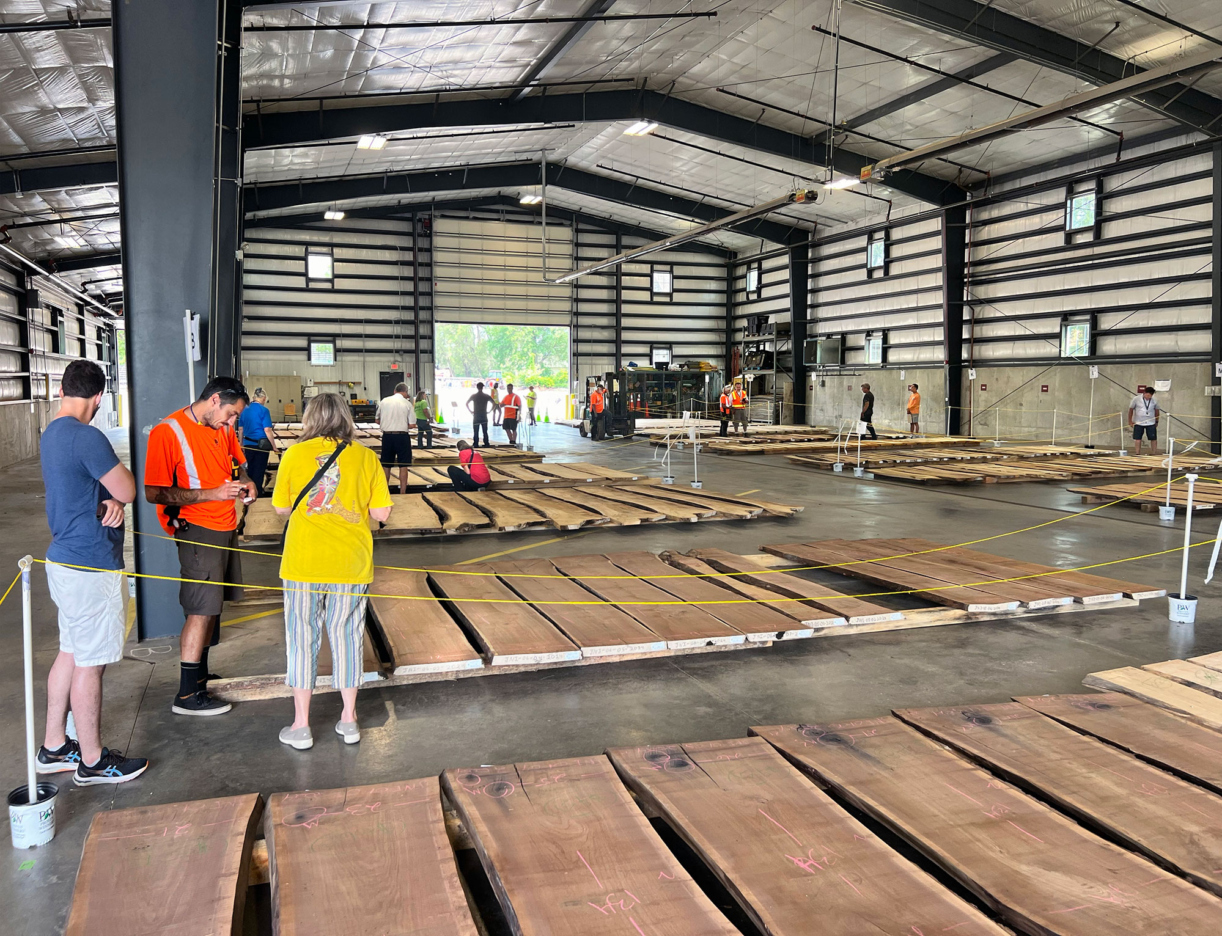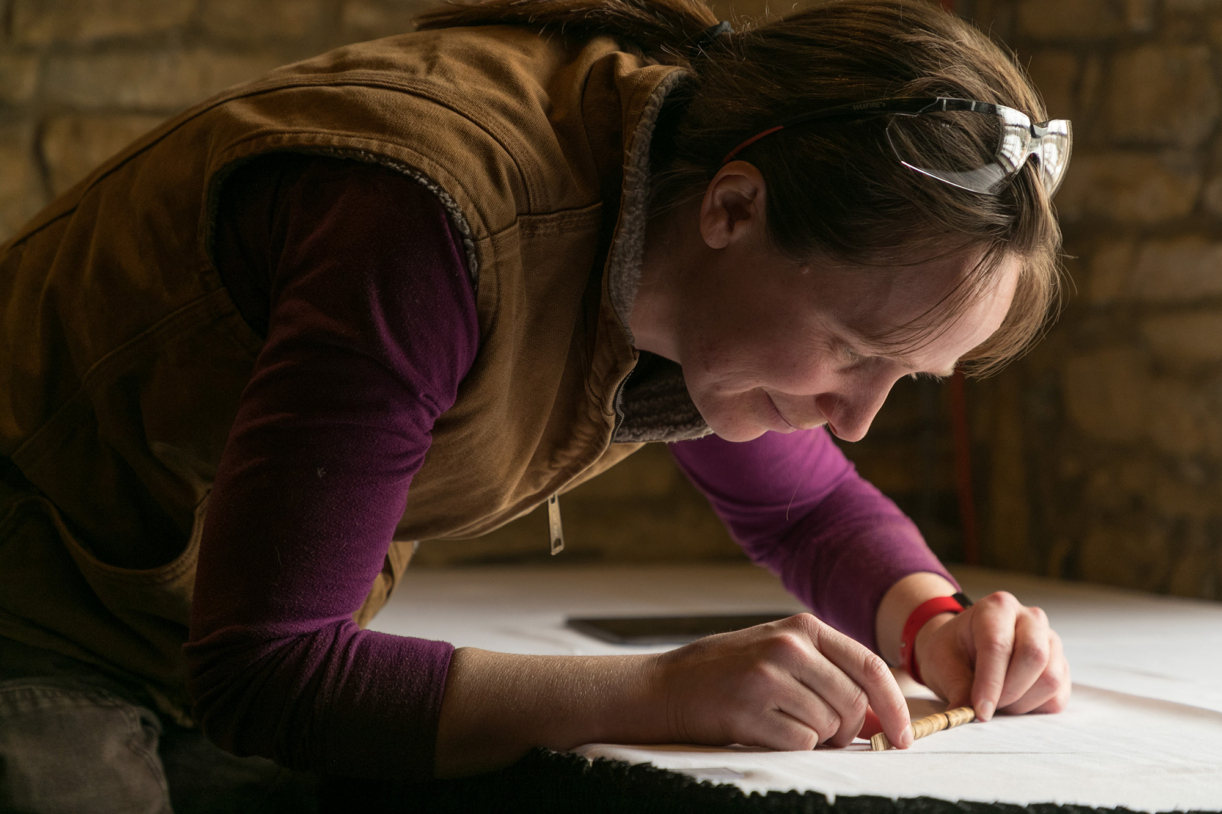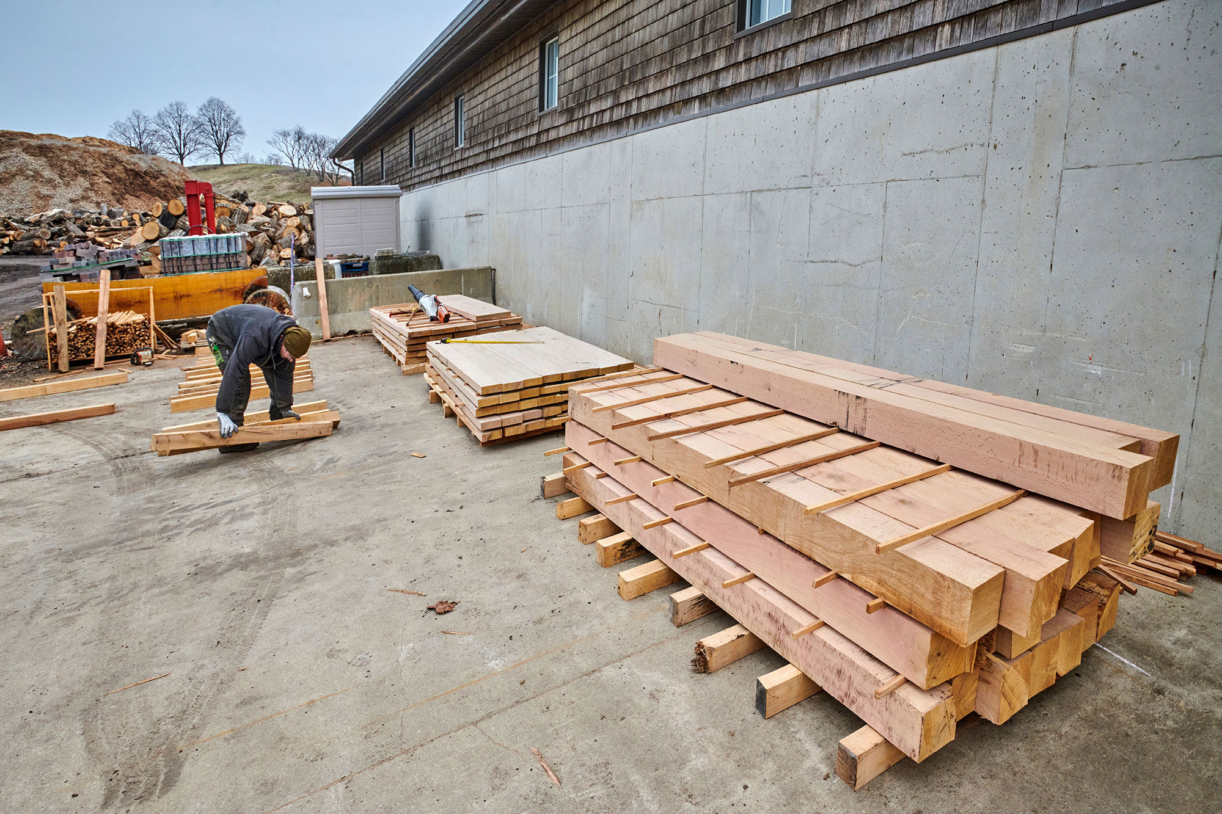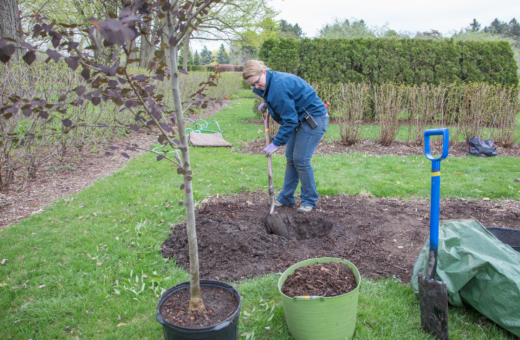Keeping Carbon in its Place
Pictured above: A conference table handmade from a 162-year-old white ash tree that was lost to the emerald ash borer. Reusing wood from trees that have to be removed at The Morton Arboretum is a sustainable practice that also stores carbon.
At first glance—if you even notice it—it’s just a fence, screening the elegant Firefly Pavilion from the workaday mulch pile. Yet this is more than a fence: It’s a carbon store.
For a century or more, white oak trees absorbed carbon from the air as they grew at The Morton Arboretum. When those trees met their natural end, their wood could have rotted away, releasing its carbon into an atmosphere that already contains too much climate-changing carbon dioxide. Instead, their logs were carefully removed from the woods, dried, and milled into boards that were built into this lasting, rot-resistant fence.
“We are harvesting wood from the trees that we need to remove in the course of our operations, as a sustainable practice and to store what carbon we can,” said Brian Malatia, who supervises the Arboretum’s arborist team.

Roughly half the mass of this fence, built of white oak from Arboretum logs by carpenter Tom Phistry, is carbon that is being kept out of the atmosphere.
As a rule of thumb, the fence’s wood is probably about half carbon. “As long as that carbon is staying in solid form in the wood, it is not in the atmosphere,” said Christy Rollinson, PhD, senior scientist, forest ecology. “We keep wood in solid form by keeping it dry and using it.”
Trees have a complex relationship to the atmosphere. On the one hand, they take in carbon dioxide, a potent greenhouse gas, to use in photosynthesis. They accumulate the carbon in the form of carbohydrates, including the wood in their trunks, branches, and roots, which is why planting trees is seen as one avenue to address climate change. On the other hand, when trees die and their wood decays, the chemical bonds are broken and the carbon re-enters the atmosphere.
Scientists, including those at the Arboretum, are studying the balance between those processes to better understand the relationship between trees and climate change. But one thing is certain: Wood that does not decay holds its carbon. As climate change has become a greater concern, architects, designers, and carpenters at places like the Arboretum are seeking ways to keep carbon out of the air by keeping wood intact—from using it for furniture (and fences) to building a 25-story timber-frame luxury apartment building in Milwaukee.
Carbon can be sequestered in wood structures for a surprisingly long time. The fire that swept the cathedral of Notre-Dame de Paris in 2019 burned oak roof beams that had been storing carbon for 800 years. In the Chicago region, Rollinson has dated still-sturdy oak timbers in the historic Norton Building in Lockport to before 1850.
The trees whose trunks became the Firefly Pavilion’s back fence were 80 to 120 years old, and now their carbon is likely to stay locked up for another 40 years or more, according to Tom Phistry, the Arboretum carpenter who built it. White oak has tight pores that shut out water and make it durable and rot-resistant even without chemical treatment. If the wood were simply allowed to decay, its carbon would dissipate much sooner.
Woodworkers can join in giving Arboretum wood a chance to last and keep its carbon and its beauty through a sale of slabs and branch unions from many species for use in furniture and other crafts on Saturday, November 2, at the Curatorial Collections and Operations Curatorial Center. The hundreds of slabs, milled from trees that fell or had to be removed from the Arboretum’s collections and natural areas, include species from around the world as well as native trees such as oak, maple, hickory and tuliptree.
The proceeds will support the Arboretum’s mission to collect, study, display, and conserve trees and other plants. And the use of the wood in beautiful objects, just as in fences and buildings, will store a little carbon and reduce a little waste.
“Every little bit helps,” Rollinson said.

Woodworkers can make use of felled trees from the Arboretum and store a little carbon by shopping at the upcoming Wood Slab Sale.
All the trees that contributed to the fence and the slab sale had been removed for good and necessary reasons. Like a natural forest, the Arboretum is always changing, and among its hundreds of thousands of trees, none will live forever.
Some trees simply come to the end of their species’ natural lifespan, whether that lifespan is 50 or 300 years. Windy storms break trunks and branches. Weakened or damaged trees near roads or trails must be removed for safety’s sake.
Diseases and insects may become too much for a tree, especially if it is weakened by drought stress. That stress is increasing because of changing weather patterns, Malatia said: “Our climate now too often has a lack of moisture or too much all at once.” That seems to be affecting some of the Arboretum’s older oaks.
Making a future for oaks is another Arboretum priority. In some areas of the woods, competing trees have been thinned out to create larger open spaces that allow sunlight to reach oak saplings. “If they don’t get enough sun, oak seedlings can’t survive,” Rollinson said.
Before the Chicago area was settled with farms, cities, and suburbs, fires used to reduce competition and create sun-filled gaps for young oaks. As human population increased, those fires have been suppressed. “Now we need to thin out maples and cherries and other trees to make sure we’ll have oaks in another hundred years,” Phistry said.
“Because of the role humans have had in the landscape, we have prevented a lot of natural regeneration in our forests, so this kind of management is really important for preserving a healthy ecosystem,” Rollinson said. “And if we can use the wood, we can close the loop in the supply chain.”

Christy Rollinson, the Arboretum’s senior scientist, counted tree rings from a core sample to determine that oak beams from a building in Lockport have been storing carbon since about 1850.
The sustainability of using Arboretum wood on-site is not just about carbon capture, Phistry pointed out. To build that fence without using its own white oak, the Arboretum would have needed to buy chemically treated pine or cedar lumber that would have been hauled hundreds of miles in trucks, with the resulting tailpipe emissions. Arboretum wood has been used to build tables for the Arboretum’s conference rooms, a display for the Visitor Center, and furniture for the Firefly Pavilion (which itself has LEED® Silver certification for a sustainable building).

A portable sawmill was used to carve fence posts from white oak logs.
Other wood, such as branches and log scraps, is ground up into the chips that are spread as mulch over tree roots and provide a comfortable surface on the hiking trails. Those wood chips do give off carbon more quickly as they break down, like the branches and leaves that fall to the forest floor. At the same time, they add organic matter and nutrients to the soil.
And meanwhile, more and more Arboretum wood is having a second life, reused for beauty, function, and keeping carbon safely out of the air.



